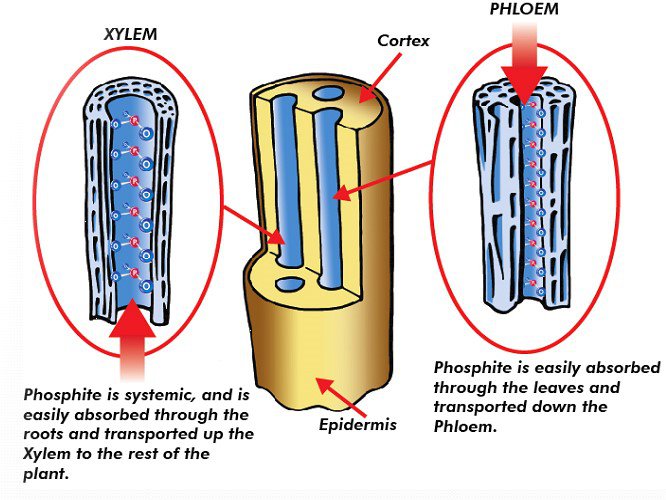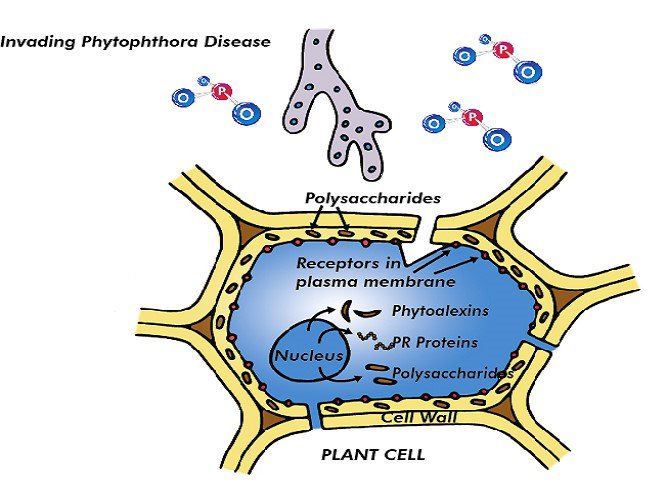
Phosphite - A Nimble Compound with a Powerful Punch
Posted by Keith Giertych on 18th Apr 2017
Hi, it's Keith Giertych from Growth Products.
Everyone knows about phosphate – the ever-important ‘P’ in N-P-K fertilizers. But fewer people know about phosphite or understand what a powerful effect it has on trees, turf, and crops. Phosphite improves plant color, stimulates bloom, increases root mass, and significantly bolsters plant health. Let’s take a look at how it works.
Symplastic Ambimobility – Who Knew?
With one less oxygen molecule than phosphate, phosphite is highly soluble in water and is easily absorbed by a plant’s leaves, branches and roots. Since it is “lighter” than phosphate, it is also more nimble, and once inside a plant it moves very quickly. In fact, phosphite is uniquely able to both move up a plant’s xylem and down its phloem, giving it the rare quality of symplastic ambimobility.

Phosphite not only moves quickly through a plant, it acts very quickly, too. One of phosphite’s many benefits is increasing the production of chlorophyll in plants. In some cases turf begins to green up within 24 hours after a phosphite spray, even when the turf is in shade. This is possible because phosphite plays a key role in the Calvin cycle – the part of the photosynthesis process which occurs in the absence of sunlight.
The increase in chlorophyll that occurs during the Calvin cycle contributes to what is perhaps the most fascinating aspect of phosphite: its ability to strengthen a plant’s cell walls. Stronger cell walls make a plant – whether it be a blade of burmudagrass, a blueberry shrub, or the tallest oak – stronger, tougher, more resilient, and better able to resist environmental stress.
There are also additional avenues through which phosphite bolsters stress reduction. Phosphite triggers a plant’s natural defense mechanisms through Systemic Acquired Resistance (SAR) and it signals plants to secrete stress-fighting enzymes. It also stimulates metabolic pathways that are involved in the producing phytoalexins. Phytoaxelins are akin to white blood cells in humans, in that they rush to a wound to stave off infection. When a plant encounters a pathogenic infection, antimicrobial phytoalexins take on a warrior role.

With phosphite, a plants natural defense mechanisms are heightened so that diseases are more easily repelled. Phosphite encourages the nucleus of a plant cell to produce defensive molecules such as phytoalexin, which attacks the disease directly. The production of polysaccharides strengthens the cell wall adding additional protection. The cells also send “alarm signals” to other cells that have not yet been attacked.
Putting The Power of Phosphite To Work
The chemistry associated with phosphite is complex, but Growth Products’ TKO Phosphite 0-29-26 makes capturing the power of phosphite easy. A clear liquid, TKO Phosphite™ is easy to apply as a foliar spray or soil drench. It has a neutral pH and low salt index, so it can be used with confidence on all plants without fear of burn or crop loss.

Potatoes grown in Egypt with the help of TKO Phosphite
With TKO Phosphite, a little goes a long way. And by using phosphite you can reduce your reliance on granular phosphates, and thus eliminate concerns about groundwater or lake-water contamination.
All the best,

